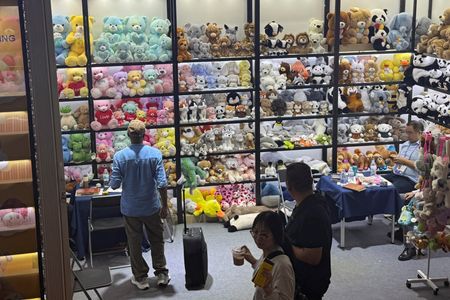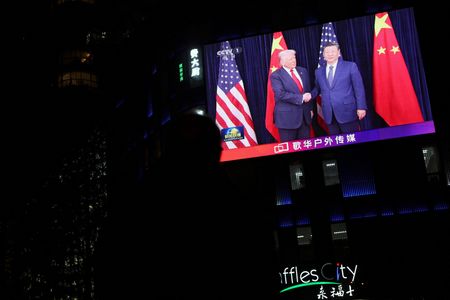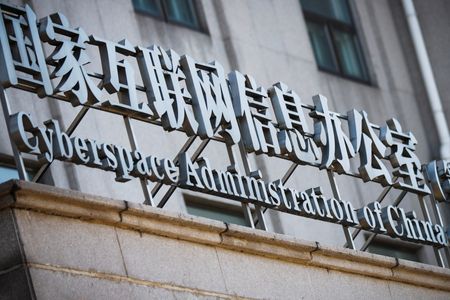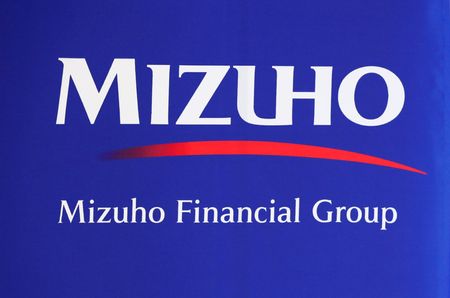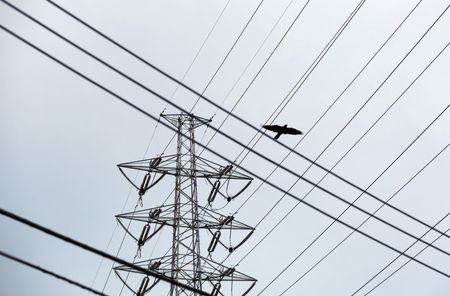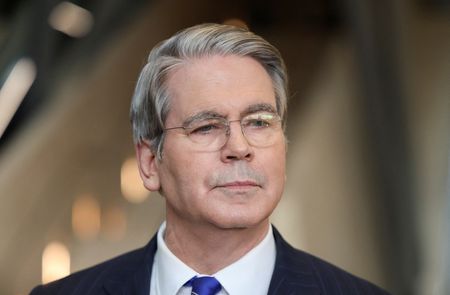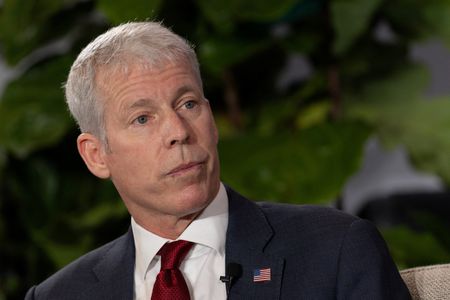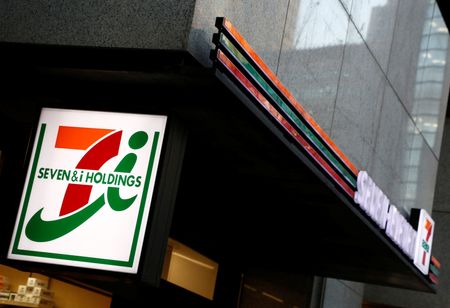By David Kirton
GUANGZHOU, China (Reuters) -For William Ying, whose company has been making colourful wooden toys in China’s Zhejiang province for 20 years, a thawing of trade tensions between Washington and Beijing is a welcome sign and one he hopes will get orders rolling again.
Ying, vice president of Shiwanxin Technology which makes toys such as block jigsaws and dial-up telephones, said around 30% of his U.S. orders were put on hold in April over crippling tariffs that led many customers to adopt a wait-and-see attitude.
“Now that the two leaders have met, it’s clearly moving in a positive direction,” Ying said of talks between U.S. President Donald Trump and China’s Xi Jinping on Thursday, when Washington agreed to cut tariffs on Chinese imports to 47% from 57%.
“Our long-term clients have already begun placing orders for next year. We don’t expect a sudden boom, but stability itself is good.”
Ying was among thousands of exporters in the southern city of Guangzhou for the biannual Canton Trade Fair, China’s largest trade exhibition and an important gauge of retail demand with more than 32,000 exhibitors selling everything from electronics and home appliances to clothing, toys and health products.
China’s exports to the U.S. fell by 27% year-on-year in September, trade data showed, while shipments bound for the European Union, Southeast Asia and Africa grew by 14%, 15.6% and 56.4%, respectively.
HIGH-STAKES GAME
Ying’s optimism was echoed by Audrey Ning, sales associate at sporting goods maker Yomee, on the side of a hall packed with sellers of stuffed snow lions, foosball tables and water pistols.
“We were all very excited when we saw the news (of Trump and Xi’s meeting). It feels like a very positive starting point that could break the nearly year-long stalemate, so we are full of hope for the future,” she said.
Chinese manufacturers have borne the brunt of tit-for-tat tariff escalations that have upended supply chains and forced some businesses to seek new markets to replace U.S. demand.
The trade outlook now depends on how the high-stakes game of threats between Beijing and Washington unfolds in the coming weeks and months.
Other exporters at the sprawling fair were more cautious, given the tariff rollercoaster they have had to deal with this year. Some are still factoring tariff-related uncertainty into their business plans.
Tim Xu, a manager at glowstick maker Zibo Dexing Industries, said his company derived half its sales from the U.S. market and had already seen orders cancelled due to tariffs.
“It’s good news overall. But nothing is certain,” he said of the latest talks. “They keep shifting back and forth, so it’s probably temporary.”
Xu said his company had been turning its attention to Europe, although it was a smaller market.
“We couldn’t lower our prices any further, they’re already at rock bottom.”
Jojo Zhong, sales manager at children’s electric car maker Shenzhen BBJ Toys, said the U.S. made up 15% to 20% of her sales, and had been hurt by tariffs.
Her company was focusing more on Latin America, now one of its main markets, as the situation with tariffs remained uncertain.
“We had planned to expand in the U.S. but it’s still in an unstable stage, so we don’t know how things will go,” she said, standing next to a two-foot tall Audi model.
“Latin America … is now about 30% of our business. We’ll continue to expand it.”
(Reporting By David Kirton in Guangzhou; Writing by Anne Marie Roantree; Editing by Kate Mayberry)

